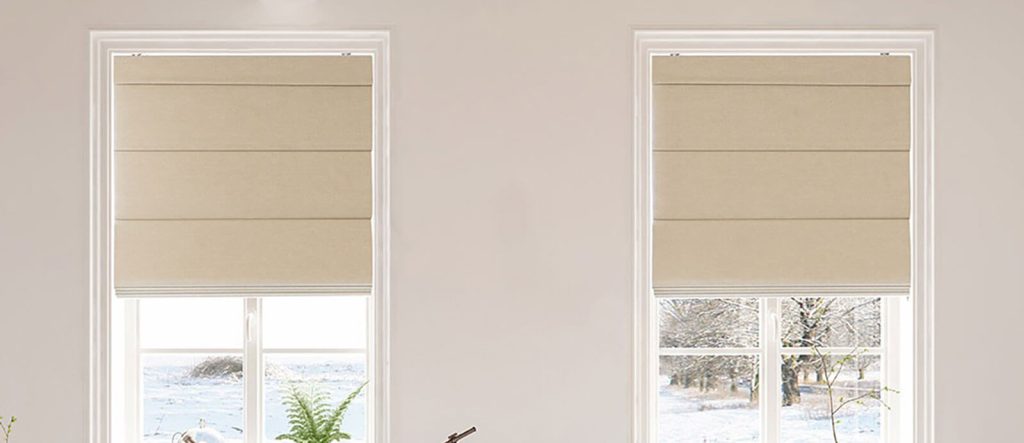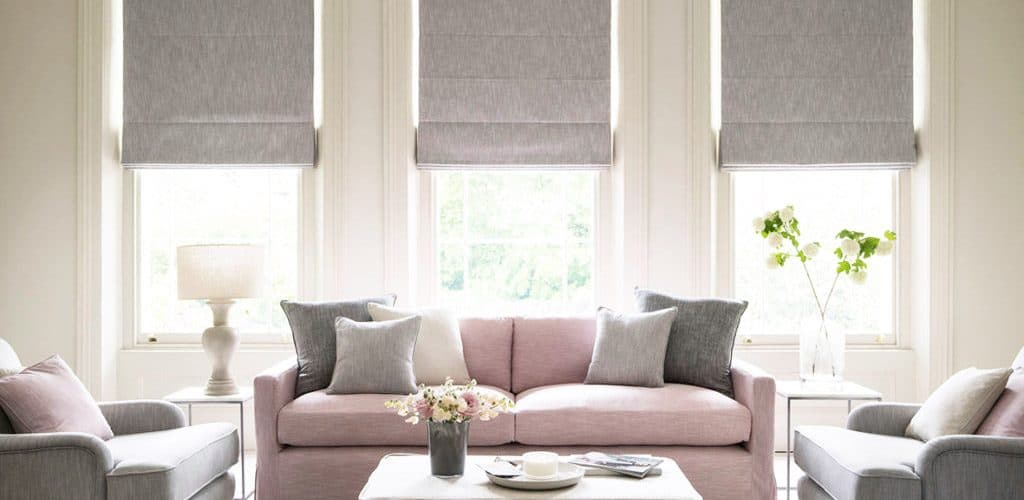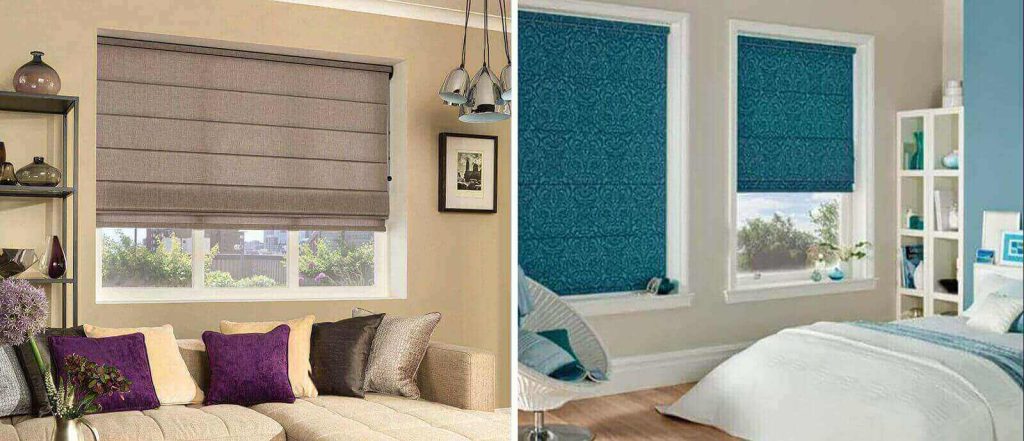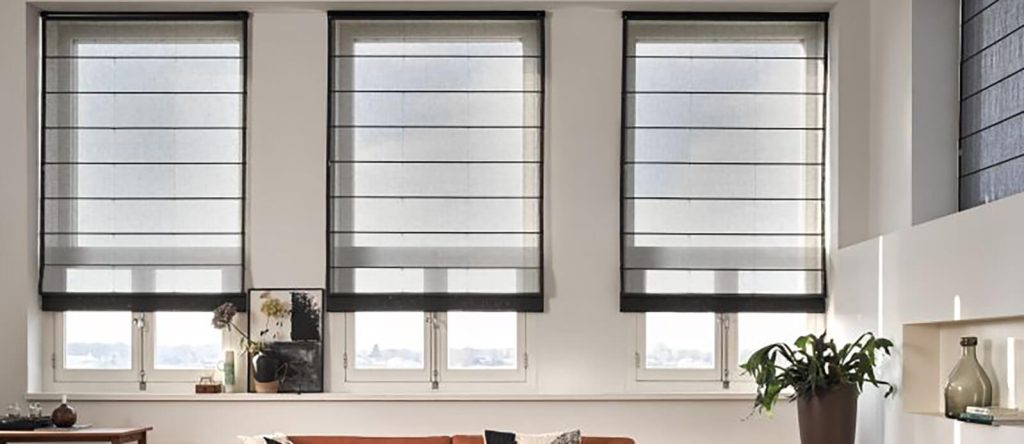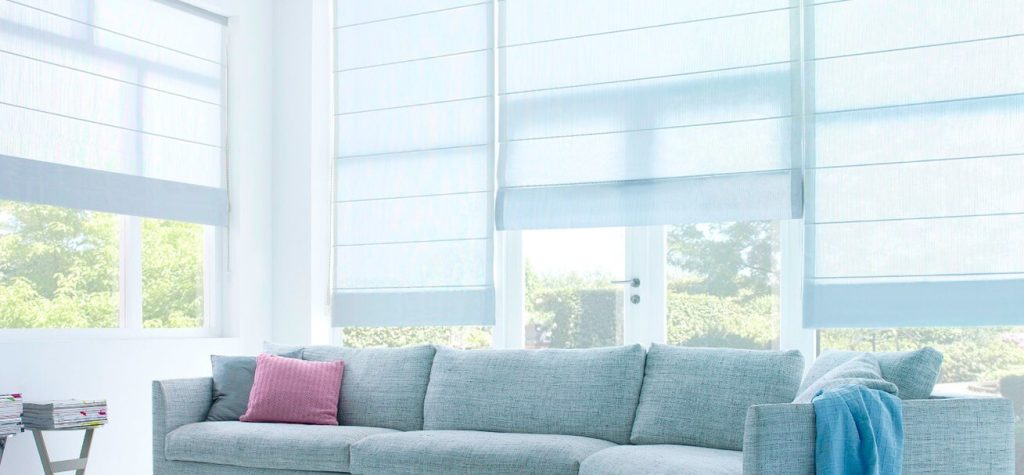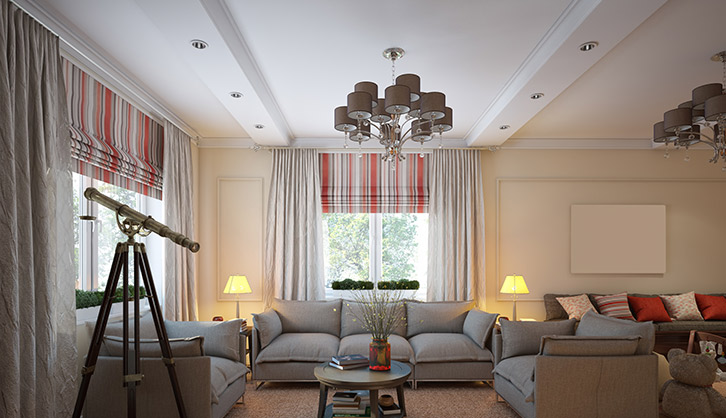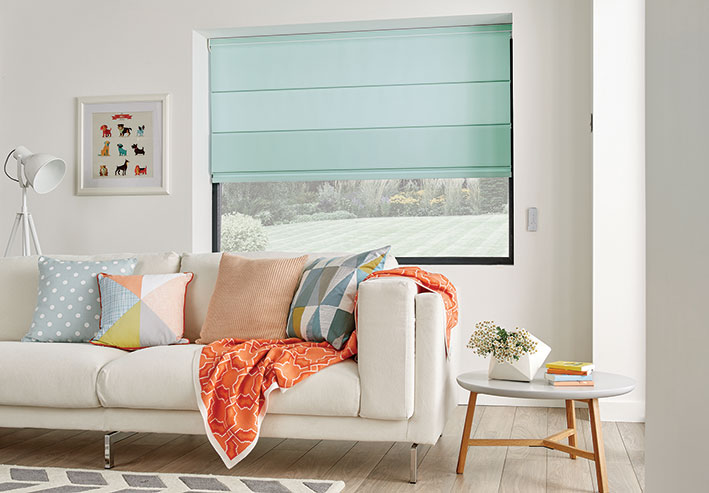Roman blinds can give your space an instant makeover thanks to their unique design and style. Factor in a wide range of colours, patterns and fabrics to choose from, and you have yourself a winner.
Custom-made Roman blinds put the power in your hands. You can decide on the type of fabric you want, in the colour and style you prefer. It’s important to note here that the choice of fabric is a critical part of the process. In fact, it’s what will make or break your Roman blinds. Without the right fabric, they won’t really serve much of a purpose.
Different things will count in your decision-making, including transparency and of course the finished look. While this does depend largely on each person’s personal preference, there are still a few things to consider. Here, we cover some top tips to help you learn more and understand better. We want you to feel less overwhelmed when faced with making decisions, which we think this’ll do.
1. Fabric Options – Choosing the best material for Roman blinds
It’s typically a good idea to try and steer clear of heavyweight fabrics. Ditto for embellishments. The sole reason for this is that it becomes more cumbersome to retract your blinds everyday. It also has a direct impact on how neatly the fabric sits when rolled up. This is a necessary consideration for Roman blinds, as the panels stack up on top of each other when raised. The textured folds of Roman blinds make for a neat, modern look.
Some fabric options for Roman blinds include:
- Cotton
- Polyester
- Linen
- Silk
- Brocade
- Acrylic
- Rayon
And when selecting your fabric, be sure to also consider:
- Colour
- Texture
- Patterns
- Lining
Cotton is a very popular choice as it’s versatile and favoured for more traditional looks. If you’re after something with more luxury and sophistication, we recommend opting for silk or even brocade. These fabrics are naturally lush and effortlessly impart a sense of grandeur which is exemplified when used as a single fabric as Roman blinds do. Bear in mind however, that they require more maintenance than others, and are sensitive to moisture and sunlight.
Linen is great if you’re looking for something airy, as this material consists of natural fibres. Rayon is another good option, but this fabric is made up of both natural and synthetic fibres. For homes battling allergies, asthma and wheezing, acrylic may suit as it helps with hypoallergenic environments. And if you’re looking for something that’s mainly durable and affordable, you can’t go wrong with polyester.
2. Sunlight and transparency
We love light, but it’s not always welcome. Sometimes you want the sun to pour into your space, other times you want to watch some telly without the glare. You should ultimately have the option to choose between the two.
For this reason, you should take a look at the blockout/ transparency features of your fabric. How much light does it let in when the blinds are closed? Does it cut it out fully, or is some light still filtering through? If so, is this something you want for your space?
Blockouts are particularly favoured for areas like bedrooms as they can help you get a good sleep. Basically, you don’t have to wake up unless you’re ready to. Any other fabric consists of a more open weave which is great for brightening up a space. Light filtering fabrics are also great for ensuring privacy as they block views from the outside-in and vice versa.
3. Natural vs. Artificial Materials for Roman blinds
All fabrics can be split into two main categories; natural and synthetic, or artificial. Linen for instance, is a natural material as it consists of natural fibres. Polyester on the other hand, is an example of a synthetic fabric.
While you might automatically gravitate towards the natural option, this isn’t ideal. Reason being, given the nature of a fabric like linen, it’s prone to creasing and is harder to clean. Ironing your blinds or pressing them is also not exactly an option. Another issue with linen fabrics is that they can drop after some time. Linen curtains for instance, may be a different length to what you initially had installed.
You might argue that Roman blinds have horizontal battens in consistent intervals as part of the structure. While this is true, it may not be enough to support a fabric like linen or assure its certainty. An alternative would be to opt for a fabric that has a mix of natural and synthetic materials, so your blinds can be more stable. They’ll also not crease as easily, and improve their durability.
4. Allergies Effects
Allergies are wide and varied, as is their severity. They can be different from person to person, and as such, your home should take this into account.
For instance, if someone in your home has a severe allergy to dust-mites then you shouldn’t opt for fabric blinds at all. Dust-mites can set up camp on almost all fabrics, so doing away with this completely is a good idea. You could alternatively look at something like Venetian blinds or plantation shutters, which do not use any fabrics whatsoever.
If you prefer fabrics and have a mild allergy however, then it’s best to stay clear from synthetic fabrics. This is because they can consist of chemicals which can trigger reactions in some. Hypoallergenic fabrics are great, and function well when maintained. As you can’t really put Roman blinds in the washing machine like you would curtains, we recommend vacuuming them regularly. Then treat them to dry-cleaning every now and again to remove any build-up of allergens.
5. Eco-Friendly
There are various types of blinds fabrics out there on the market. However, not all of them are made well. Some, like imported fabrics, are cheap and downright nasty, as they may consist of VOCs (volatile organic compounds) such as formaldehyde and lead: Two things you absolutely do NOT want your blinds to have. They cause those pungent vapours which, if you inhale, are detrimental to your health. Additionally, their manufacturing and deterioration can be harmful to the environment as these chemicals are released back into the earth.
We work with local fabric suppliers that’ve been our partners for a long time, so we know exactly what to expect. We trust their commitment to producing quality fabrics that are eco-friendly and safe for all. Aside from this supporting the local community and economy, we’re assured of the adherence to Australia’s strict standards and guidelines.
Conclusion
Choosing the right fabric can be all the difference between your Roman blinds lasting longer and fading out before their time. Additionally, you can create different aesthetics as they come in varying textures. Transparency also plays an important role in how you use your blinds and how they can serve you in turn.
Our advice is to take your time in leisurely picking out a fabric instead of rushing into it. Seeing as how you’ll be using your new blinds for some time to come, you want to be sure they’re perfect. This important step is one way of doing that.
If you’d like some help picking out the best material for Roman blinds, why not reach out to the team? We’ll help you book an appointment so one of our consultants can visit you in your home and offer their expertise. We’ll also be sure to bring along our fabric samples, so you can browse through them in-person.





